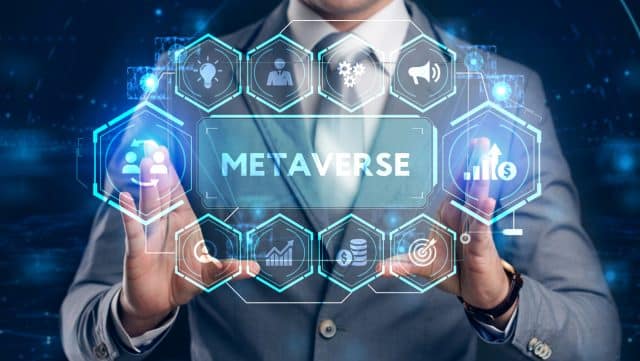How the metaverse is set to change the way businesses communicate [Q&A]

Increased use of the metaverse and other immersive spaces using VR, AR and digital avatars, is going to change how businesses communicate with their customers.
In an increasingly globalized world part of the issue is how real time experience will cope with the use of different languages. This is expected to put real pressure on automated and machine translation services to deliver fast, accurate results.
We spoke to Christiane Bernier, VP at RWS, to discover more about what the metaverse might mean for business communication.
BN: As we move away from a text-based internet what will this mean for the use of language?
CB: Similar to in-person communication, in the metaverse, communication becomes multi-dimensional, involving multiple senses, particularly body language. The introduction of communication through the metaverse could be seen as competing with text-based communication, and for languages and markets where metaverses will be enabled, one can speculate that while these technologies are available to privileged populations, this will not be a significant threat. It was not long ago that the rise of texting and usage of smart phones, among other things to create videos, was viewed as a threat to written language. And yet, paradoxically today, more written content is created than ever before.
For languages of lesser diffusion, the greatest challenge will be enabling access of these technologies to complement their activities to maintain their languages. The multimodal communication that is central to the metaverse can replace technical, procedural, and training documentation. For long-tail languages often excluded from such documentation today due to prohibitive costs to localize and maintain, this can be a great accelerator to supporting their language.
The shift to the metaverse will require new terminology, as has been the case in the past with new technologies. Metaverse-enabled technologies will require terms for how to create and configure the surroundings or move virtual objects into the real world will be needed: 'pinching' and 'unpinching', for example, will become as ordinary as scrolling on a computer but will allow you to create rich metaverse communication with others.
BN: How can the translation industry keep up with the evolving tech landscape?
CB: The translation industry today has been built on some assumptions: there is source content, it is text based and this needs to be translated to another language. These assumptions have been challenged for some time even with basic multimedia and now the metaverse, and because of these we can no longer expect source content to be easily accessible in text form.
The localization industry needs to evolve its assumptions and therefore tooling and processes to multidimensional and real-time or near real-time communication. Additionally, it must assume that there will be multiple delivery channels of communication. Today it still struggles to leverage content in written documentation and video formats because tooling and processes were built for another time. Though the industry has been investing in the usage of AI to support automated translation using neural machine translation tools, generative AI will provide new opportunities to automate bits of the end-to-end processes and perhaps allow the industry to move more swiftly and easily to the expanding communication models. It is still too early to tell what capabilities and limitations will come from generative AI returning compiled answers to queries, in contrast with more 'raw' search results from common browsers of today. What is certain is that these capabilities and limitations will deploy at a different pace and perhaps differently by market and language.
BN: What needs to be done to build trust in automated translation services?
CB: For there to be trust in automated translations, continuous reviews by language experts are needed and more user feedback needs to be introduced more often, to close the loop on quality. Organizations today can and should collect user feedback from the different markets and languages they localize in. Together with expert reviews, build a picture for their content and the workflows they apply to these, for example human translation, post-edited machine translation and perhaps generative AI.
BN: Beyond language what other barriers are there to globalized communication?
CB: We need to remind ourselves that internet access is still not reliably and universally accessible in all parts of the world or in some portions of populations, including some of the elderly, people with disabilities and otherwise marginalized populations. This will be further complicated by the metaverse because currently most AR/VR systems are developed by individual tech companies with very limited cross-platform or global communication in mind. Internationalization standards for the metaverse will need to be developed and adopted in order to ensure compatibility across different locales.
Beyond the technological considerations, multidimensional communication across cultures and languages will require robust inventorying of cultural distinctions such as in facial and body language, as well as local equivalents of objects. A house can look very different in different countries and signage on roads and in public spaces also varies to a certain extent.
Finally, there are legal considerations to be identified and dealt with: avatar-based identity theft, object-avatar or cross-avatar interactions may have potentially criminal and abusive nature and there are still gaps in legal regulations for such cases on an international scale. More fundamentally, country legislation today still struggles in internet cross-border activities and the need for international legal cooperation will grow with the metaverse.
BN: How can businesses get ahead of the game as new comms channels emerge?
CB: Businesses need to invest in monitoring emerging technologies and how they might shape or create new communications channels. Marketers need to look at these and what they mean in the different customer verticals they operate in and experiment themselves with new communications channels. Keeping the customer at the center of these activities means you will be able to reach them in the most useful and meaningful way possible.
Image credit: putilich/depositphotos.com
